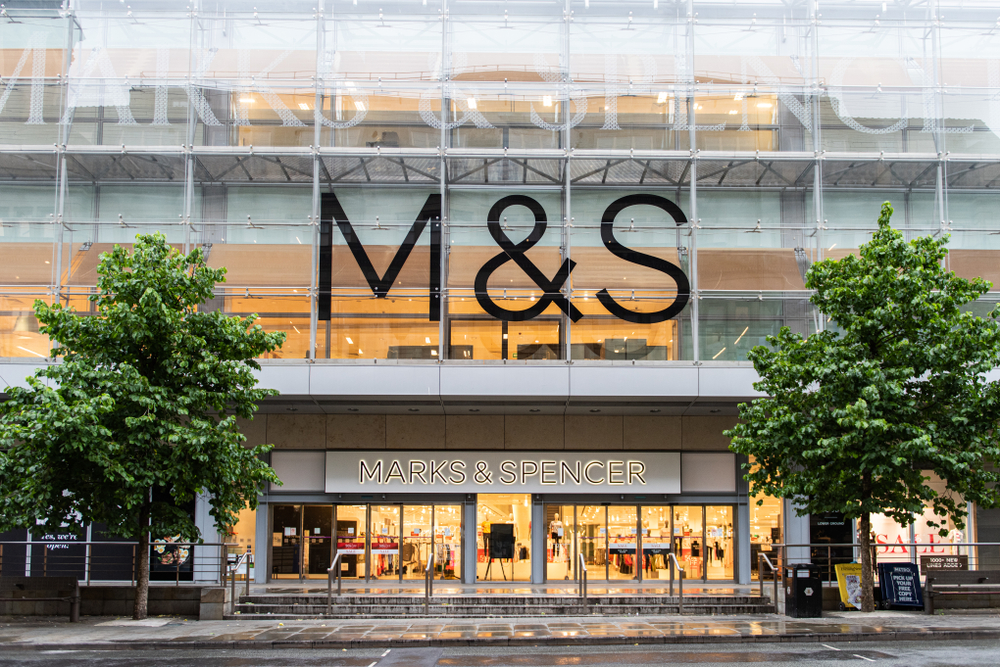Asos says it is seeing demand rebalance between online and offline channels as customers return to the high street post-pandemic. The online share of sales is now higher in all its markets than it was before the pandemic – but lower than it was in lockdown. First-half sales grew by 1% but at the bottom line it reported a pre-tax loss as costs continue to increase.
In the first half of its financial year Asos was hit by supply chain issues, with delays to both sea and air freight and rising costs in areas from warehousing and labour to customs and tariffs. It says is now going into the second half of its year with improved stock levels and availability.
Peak trading was strong, but uncertainty from the Omicron variant of Covid-19 weakened demand in the sale season of January. Returns rose in the first half of the year as they returned closer to pre-pandemic levels. In the UK market, the number of subscribers to its Premier subscription scheme, which offers free delivery and returns, rose by 23%.
The update came as Asos turned over £2bn in the six months to February 28 2022. That’s 1% up from £1.97bn a year earlier. In its home UK market, sales grew by 8% to £895.5m. Long-term the retailer is targeting £7bn in sales.
But at the bottom line it reported a pre-tax loss of £15.8m, representing a 115% decline from pre-tax profits of £106.4m a year earlier. The retailer was affected by the unwind of Covid-19 benefits and by rising costs in areas from warehousing to labour and freight.
The retailer says that it continues to see active customer numbers grow – by 7% to 26.7m – in the first half of its financial year, a year from a “period of exceptional customer acquisition” when high street fashion shops were closed in lockdowns and trading restrictions.
It has launched a fourth fulfilment centre in order to improve its stocks and availability while working with more partners to fulfil sales directly.
Asos’ former chief executive Nick Beighton stepped down at the full-year results announcement in October 2021 as the retailer warned of supply chain challenges. Since then its chief strategy officer, chief people officer and chief growth officer have all stepped down. A new strategy board has been put in place, led by the chief operating officer and chief financial officer, working with chief commercial, growth and technology officers and supported by an expanded executive team.
Mat Dunn, chief operating officer and chief financial officer of Asos, says: “Asos has delivered an encouraging trading performance, against the continuing backdrop of significant volatility and disruption. The team has acted with determination and pace and is making good early progress on the strategic plan for the next phase of growth. While much remains to be done, we have a clear plan for each of the three key pillars – our platform, consumer offer, and international expansion – and are already seeing positive signs of progress across the business. We’re confident of the benefits these efforts will create and our continued ability to deliver.
“We’ve entered the second half of the year well placed, and believe that our stock position, with increased product availability and newness, will stand us in good stead. We remain mindful of the potential impact on demand from the growing pressures on consumer spend and will continue to be responsive to any changes in market conditions as we progress the work started in the first half to deliver on our ambitions.”
Multichannel strategy
Asos now aims to use data to improve personalisation and the broader customer experience, expanding both its data team and investments.
It will continue to expand its partner fulfilment programme, with the aim of having 5% of sales delivered directly by partner brands. So far it has worked with Adidas and Reebok in the UK to deliver directly where Asos had sold out of its own stock. By the end of February partner fulfilled sales accounted for 8% of Adidas and about 7% of Reebok sales.
Asos plans to focus on its own brands, improving speed to market while creating new brands and expanding further into the face, body and sportswear categories. Overall, it aims to add at least £1bn to its annual own-brand sales. Sales of its Topshop brands grew 193% year-on-year.
It also aims to drive international growth by localising its offer further and investing more in marketing. Overall its ambition is to double the size of its US and Europe business by taking the strength of UK customer proposition to the US and Europe by localising both its operations and its customer experience. In the US it is selling in branches of Nordstrom, while testing a new marketing campaign that aims to reach its target 18-34-year-olds via channels including TikTok, YouTube, Snapchat, Hulu and Roku.
Sustainability
Asos says it has seen its scope one and two emissions reduce by about 59% with transport emissions per £ of profit reduced by 42%.
Asos sells online and through its mobile app in 10 languages to more than 200 markets. It sells a range of more than 100,000 products from its own brands – which include Asos and former Arcadia brands Topshop, Topman, Miss Selfridge and HIIT, as well as from 900 global and local partner brands.









